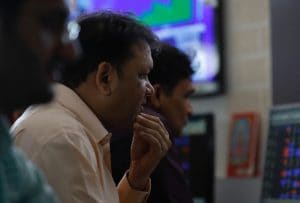Want to invest in mutual funds but don’t know how to go about it?
Get all your mutual fund related queries answered by our expert, Feroze Azeez, deputy chief executive officer, Anand Rathi Private Wealth Management, on our show Mutual Fund Corner.
Q: 65-year-old Sundar Ram writes to us from Hyderabad. I have Rs 15 lakh to invest in debt fund. I want to make Systematic Transfer Plan (STP) from that fund in equity mutual fund. Please suggest three or four debt funds.
A: In order to do an STP, you need to invest in liquid funds. You can invest in these funds: Aditya Birla Sunlife Liquid Fund, HDFC Low Duration Fund, Mirae Asset Cash Management Fund and Reliance Liquid Fund.
Q: 33-year-old Hemanth Kumar writes to us from Bengaluru. I am investing Rs 2,000 per month in Mirae Asset Emerging Bluechip-Reg (G), SBI BlueChip Fund-Reg (G), L&T Hybrid Equity Fund-Reg (G), Kotak Standard Multicap Fund (G), ICICI Pru Equity & Debt Fund (G), HDFC Hybrid Equity Fund (G), Franklin India Taxshield (G), DSPBR Tax Saver Fund-Reg (G) and Aditya Birla SL Frontline Equity Fund (G) from last one year. Can you please review my portfolio and let me know for any changes needed for the next 10 years.
A: You have exposure to nine funds currently. We would advise you to limit your exposure in large and mid-cap funds to a maximum of 4-5 funds. Hence we suggest you to increase your investment in the below funds:
Mirae Asset Emerging Bluechip Fund: With the total AUM of Rs 5,730 crore, the fund is managed by Neelesh Surana. The fund has been a consistent performer. We suggest you to continue your investments in the fund.
SBI Bluechip Fund: The performance of the fund has dipped in the last one year. However, it has a long-standing track record. We recommend you to hold on to the fund and monitor its performance.
L&T Hybrid Equity Fund: This fund is a balanced fund, which invests in equity and debt. If we look at the returns generated by balanced funds historically, it can be seen that investments in equity and debt separately have generated higher returns than a balanced fund. Hence, we recommend you to shift your investments in HDFC Mid-cap Fund.
Kotak Standard Multi-Cap: With the total assets under management (AUM) of Rs 21,271 crore, this fund is managed by Harsha Upadhyaya. The fund has delivered higher risk adjusted returns measured by sharpe ratio vis-à-vis benchmark in most of the time frames, indicating that the calls taken by the fund manager has worked in his favor with the fund outperforming the benchmark across various time periods. The fund is well diversified across 55 stocks with almost 75 percent allocated to large-cap companies. You can continue to invest in this fund.
ABSL Frontline Equity Fund: Instead of investing in Aditya Birla Frontline Equity, we would suggest you to invest in another fund of the same fund house – Aditya Birla Sunlife Equity Fund. If you see over the last 2, 3 and 5 year returns, ABSL Equity Fund has outperformed ABSL Frontline Equity Fund. ABSL Frontline Equity Fund is a pure large-cap fund, while ABSL Equity Fund is a multi-cap fund. The alpha generation of a multi-cap fund is higher than that of a pure large-cap fund.
ICICI Pru Equity & Debt Fund (G): This fund is a balanced fund, which invests in equity and debt. If we look at the returns generated by balanced funds historically, it can be seen that investments in equity and debt separately have generated higher returns than a balanced fund. Hence, we recommend you to shift your investments in Mirae Asset India Equity Fund.
HDFC Hybrid Equity Fund (G): This fund is a balanced fund which invests in equity and debt both. If we look at the returns generated by balanced funds historically, it can be seen that investments in equity and debt separately have generated higher returns than a balanced fund. Hence, we recommend you to shift your investments in Franklin India Prima Fund.
You have also invested in two tax-saver funds. We suggest you to invest in ELSS funds only if your sole aim is to save tax.
Q: 23-year-old Raunak Rajpal writes to us from Mumbai. Have SIP’s in multiple funds. Invested Rs 2,500 per month in IDFC Multicap Direct Fund (G), invested Rs 1,000 per month in Reliance Small Cap Fund (G), invested Rs 1,000 per month in ICICI Prudential Nifty Next 50 Fund (G) and invested Rs 1,000 per month in HDFC Hybrid Equity Fund. All are direct funds. Please assess my portfolio. Have a high risk appetite.
A: IDFC Multicap Fund: The fund has generated lower than average returns in the last 2, 3 and 5 year time frame. It has also underperformed its category average in the past years. We would suggest you to shift your investments in Mirae Asset India Equity Fund.
Reliance small-cap Fund: The fund has generated good returns. However, the standard deviation of the fund is high. We suggest you to hold your investments in the fund and review it on a regular basis.
ICICI Pru Nifty Next 50 Fund: This is an index fund. There is no alpha generation in index funds since they mirror the index. We suggest you to invest in actively managed diversified funds. You can invest in ABSL Equity Fund.
HDFC Hybrid Equity: This fund is a balanced fund, which invests in equity and debt both. If we look at the returns generated by balanced funds historically, it can be seen that investments in equity and debt separately have generated higher returns than a balanced fund. Hence, we recommend you to shift your investments in Franklin India Prima Fund.
Q: 30-year-old DV Raju writes to us from Andhra Pradesh. I have invested in Kotak Select Focus Fund, SBI Blue Chip Fund, Mirae Asset Equity Fund, ICICI Blue Chip Fund, HDFC Midcap Opportunity Fund, Canara Mid Cap Fund, Aditya Birla Frontline, ICICI FMCG Fund, ICICI Corporate Bond Fund and HDFC Short Term Debt Fund. Started investing into mutual funds through SIPs monthly Rs 40,000 since one year. My goal is child education and the corpus is Rs 2 crore.
A: You have an exposure to 10 funds. Over-diversification in portfolio can lead to lower returns. Below is the review on your funds:
Kotak Select Focus Fund: Now called Kotak Standard Multi-cap Fund. With the total AUM of Rs 21,271 crore, this fund is managed by Harsha Upadhyaya. The fund has delivered higher risk adjusted returns measured by Sharpe ratio vis-à-vis benchmark in most of the time frames, indicating that the calls taken by the fund manager have worked in his favor with the fund outperforming the benchmark across various time periods. The fund is well diversified across 55 stocks with almost 75 percent allocated to large-cap companies. You can continue to invest in this fund.
SBI Bluechip Fund: The performance of the fund has dipped in the last one year. However, it has a long-standing track record. We recommend you to hold on to the fund and monitor its performance.
Mirae Asset India Equity Fund: The fund has been a consistent performer. You can continue to invest in the fund.
HDFC Mid-cap Opp Fund: You can continue to invest in the fund.
ICICI Bluechip Fund: The total AUM of the fund is Rs 18,747 crore and it is managed by Rajat Chandak and Priyanka Kahndelwal since the last one year. You can continue to invest in the fund.
ABSL Frontline Equity Fund: Instead of investing in Aditya Birla Frontline Equity, we would suggest you to invest in another fund of the same fund house – Aditya Birla Sunlife Equity Fund. If you see over the last 2, 3 and 5 year returns, ABSL Equity Fund has outperformed ABSL Frontline Equity Fund. ABSL Frontline Equity Fund is a pure large-cap fund, while ABSL Equity Fund is a multi-cap fund. The alpha generation of a multi-cap fund is higher than that of a pure large-cap fund.
We would suggest you to redeem your investments from ICICI FMCG Fund, since it is a thematic fund. You can continue to invest in debt funds. Also, we would suggest you to build your entire portfolio with the above recommended funds.
Q: 40-year-old Ajit Kumar writes to us from Allahabad. I have invested Rs 2,000 each in DSP Small Cap Fund, HDFC Midcap Opportunity, SBI Magnum Multicap, Aditya Birla Sun Life Frontline Equity Fund and Aditya Birla Sun Life Tax Relief 96 Fund since 2016. There is no issue of time horizon. In addition, I had to invest Rs 5,000 also. Please recommend a suitable equity fund or to distribute among currently invested funds.
A: SSP Small-cap Fund: The fund had stopped taking investments last year. However, it has again started taking investments now. The fund has been under-performing in the last two years. We suggest you to shift your investments to another small-cap fund like HDFC Small-cap Fund.
HDFC Mid-cap Opp Fund: With the total AUM of Rs 21,149 crore, this fund is managed by Chirag Setalvad and Rakesh Vyas. The scheme predominantly invests in mid-cap companies. The fund has been a consistent performer and you can continue to invest in the fund.
SBI Magnum Multi-Cap Fund: In the one year, second year and third year time frame, ending August 31, 2018, the fund has shown some under performance. Instead, we would suggest you to invest in another multi-cap fund – Kotak Standard Multi-cap Fund which has been a consistent performer over all time frames.
ABSL Frontline Equity Fund: Instead of investing in Aditya Birla Frontline Equity, we would suggest you to invest in another fund of the same fund house – Aditya Birla Sunlife Equity Fund. If you see over the last 2, 3 and 5 year returns, ABSL Equity Fund has outperformed ABSL Frontline Equity Fund. ABSL Frontline Equity Fund is a pure large-cap fund, while ABSL Equity Fund is a multi-cap fund. The alpha generation of a multi-cap fund is higher than that of a pure large-cap fund.
ABSL Tax Relief 96 Fund: This is an ELSS fund. We would suggest you to invest in ELSS funds if your aim is to save tax.
If you want to make an additional investment of Rs 5000, you can invest in Mirae Asset India Equity Fund.
Q: 35-year-old Veni Prasad writes to us from Dubai. I am interested to invest around Rs 5 lakh in mutual funds. Could you suggest me the best mutual funds to invest. I can go for lump-sum or SIP as required.
A: You can invest the amount as lump sum in the ratio of 70:30 in large cap and mid cap funds. Along with this, we would also suggest you to start with SIPs for wealth creation. In large cap, you can invest in Kotak Standard Multi-cap Fund and Birla SL Equity Fund; in Midcap, Franklin India Prima and Canara Robeco Emerging Equities Fund; in Small Cap, HDFC Small-Cap Fund.
Q: 34-year-old Sarfaraz Sheikh want some advice on investment. I just started investing in mutual funds from December 2017. I have invested Rs 1,500 in DSP Blackrock (ELSS), Rs 1,500 in Tata Tax Saving (ELSS), Rs 26,000 in Kotak Opportunities, Rs 24,000 in Kotak Focus Fund and Rs 7,000 weekly in ICICI Prudential Balanced Fund. I am also planning to invest my savings till date i.e. Rs 9.6 lakh. My Target is to create a corpus of Rs 1 crore in 15 to 20 years. I am earning Rs 73,000 per month. Can you please suggest me how can I achieve my target?
A: You have invested in two ELSS funds. We would suggest you to invest in ELSS funds only if your sole aim is to save tax. Also, we would suggest you to make your investments in the funds off top 10 fund houses. It is also important to diversify your portfolio across different fund houses. You have two funds from the same house. We suggest you to continue your investments in Kotak Select Focus Fund, which is now called Kotak Standard Multi-cap Fund. You can shift your investments from Kotak Opportunities Fund to Mirae Asset India Equity Fund. We would not suggest you to invest in a balanced fund, as we feel that your equity and debt investments should be separate. In order to get better returns, you need to invest in equity and debt funds separately.
Q: 53-year-old Jyoti Gurao writes to us on Facebook. Have some excess Rs 5 lakh. I want to invest in mutual fund. Can I invest lump sum or should it be SIP.
A: You can invest as lump sum in the ratio of 60:40 in equity mutual funds and debt mutual funds. You can expect around 14-15 percent returns. In Large Cap, I recommend Mirae Asset India Equity and Birla SL Equity. In Midcap, I recommend HDFC Mid-cap Opportunities Fund and in debt funds, I recommend ICICI Pru Regular Savings and Franklin India Income Opp Fund.
Q: Anantha Venkata Krishnan PV writes to us on Facebook. Please give your priority out of these: Axis Bluechip Fund, Axis Focused 25 Fund, Axis Multi Cap Fund, Tata Digital India Fund, UTI Equity Fund and Tata Banking & Financial Services Fund.
A: You can look at investing in Axis Focused 25 out of all the funds selected by you. We would suggest you to build your portfolio in Birla SL Equity, Mirae Asset India Equity and in the Mid-cap category you can invest in Canara Robeco Emerging Equities Fund.
Q: 31-year-old Padmanabha Linganna writes to us on Facebook. I want to invest for a period of 10 years. I can take high risk with respect to investment. Can you please suggest for SIP with maximum returns.
A: Since you have a long-term time horizon, we would suggest you to in invest in equity mutual funds. You can look at investing Mirae Asset India Equity Fund in the large-cap category and Franklin India Prima Fund in the Mid-cap category.
Q: Rajeev Nagpal writes to us on Facebook. Can you tell me about Kotak Select Focus & Kotak Classic Equity Fund?
A: We would suggest you to invest in Kotak Select Focus Fund, which is now called Kotak Standard Multi-cap Fund. The fund has delivered higher risk adjusted returns measured by sharpe ratio vis-à-vis benchmark in most of the time frames, indicating that the calls taken by the fund manager have worked in his favor with the fund outperforming the benchmark across various time periods. The fund is well diversified across 55 stocks with almost 75 percent allocated to large cap companies. The fund manager, Harsha Upadhyay, is confident on his portfolio positioning and strives to deliver an alpha of 4 percent-5 percent in the coming years as he expects the earnings growth to pick up going forward.
Q: 30-year-old Praba Karan writes to us on Facebook. I have invested 60 percent of my mutual funds in small and midcap funds namely, Mirae Asset Emerging Bluechip Fund, L&T Midcap Fund and Reliance Small Cap Fund. The rest two funds (40 percent) are MNC Fund and Large Cap Fund. I am doing SIP since January 2016. Probably, I have planned to reduce the risk post 40 years. Please advice.
A: It’s important to have a well-diversified portfolio and investing only in mid-cap funds can make your portfolio risky. All your midcap funds are doing well. However, we would suggest you to add Mirae Asset India Equity Fund and Kotak Standard Multi-cap Fund to your portfolio.
Disclaimer: The views and investment tips expressed by investment experts on CNBCT-V18 are their own and not that of the website or its management. CNBC-TV18 advises users to check with certified experts before taking any investment decisions.









 Listen to the Article
Listen to the Article 
 Daily Newsletter
Daily Newsletter








